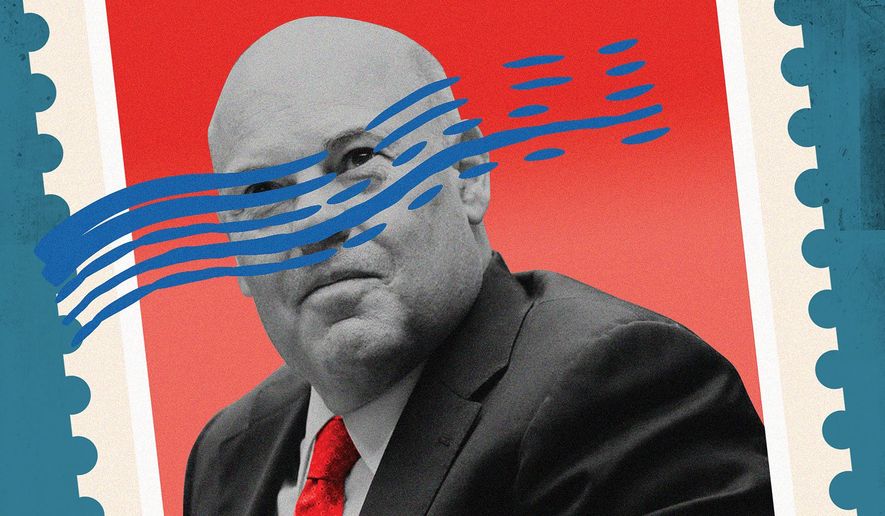OPINION:
The Postal Service has always been a money-loser — but it doesn’t have to be. Louis DeJoy had the right idea when he was appointed to head this 250-year-old institution in 2020.
His Delivering for America plan aspired to make USPS financially viable within few years. This was a reasonable, but also controversial strategy, tainted by unfounded charges that Mr. DeJoy was using his office to provide political assistance to the GOP.
That innovative road map now languishes in the dead letter office as the organization continues to lose cash at the rate of $6 billion per year. The Postal Service has invested billions redesigning the postal network only to see service decline and complaints rise.
USPS can’t use the economy as an excuse for the failure — especially with the 29% increase in postal rates over the past three years. Every business is struggling under Bidenflation, but most still manage to turn a profit.
Congress offered a lifeline in the form of the Postal Service Reform Act in 2022, relieving the organization of some unique, even unfair employee healthcare obligations many said were responsible for the magnitude of the Postal Service’s operating loss.
Mr. DeJoy intended to slash costs by $34 billion over ten years, but they continue skyward thanks to labor costs that comprise 75% of annual expenses. It takes an iron will to fix a problem at this scale, but it can be done.
When unionized full-time employees retire, that’s the ideal time to skip filling those positions so the workforce is trimmed to match the steady decline in mail delivery volume, which dropped another 9% last year.
This was done successfully about a decade ago, but Mr. DeJoy chose a different path. He filled the vacancies by converting 125,000 part-time employees into full-time workers. He then went out and hired more part-timers.
That’s a double whammy that, rather than allowing the total number of postal service slots to fade away peacefully, added 30,000 careerists to the employment rolls over three years.
Mr. DeJoy argued converting part-timers to career status reduced overtime costs. He even bragged about how USPS was fully staffed for the last Christmas shipping rush. That’s a lousy deal, because permanent, unionized career employees are paid 50% more per hour and enjoy deluxe retirement benefits. Fully staffing for the busiest time means having excess employees for the remainder of the year.
The private sector deals with such needs by maintaining a flexible workforce that can be scaled down as demand declines. The proper response to a downturn in demand is not to scale up.
The worst anti-reform was the decision to terminate contracts with outside firms engaged in long-haul delivery. The private sector was handling the job efficiently and cost-effectively. Rather than allow that to continue, USPS is bringing that function back in-house.
Congress ordered the Postal Service to continue to maintain an integrated network that provides affordable, reliable service throughout the country. That’s a tall order, especially if, as Mr. DeJoy now acknowledges, it may run out of money by 2028. Rather than reduce the role private contractors play, the USPS must look for ways to expand it.




Please read our comment policy before commenting.